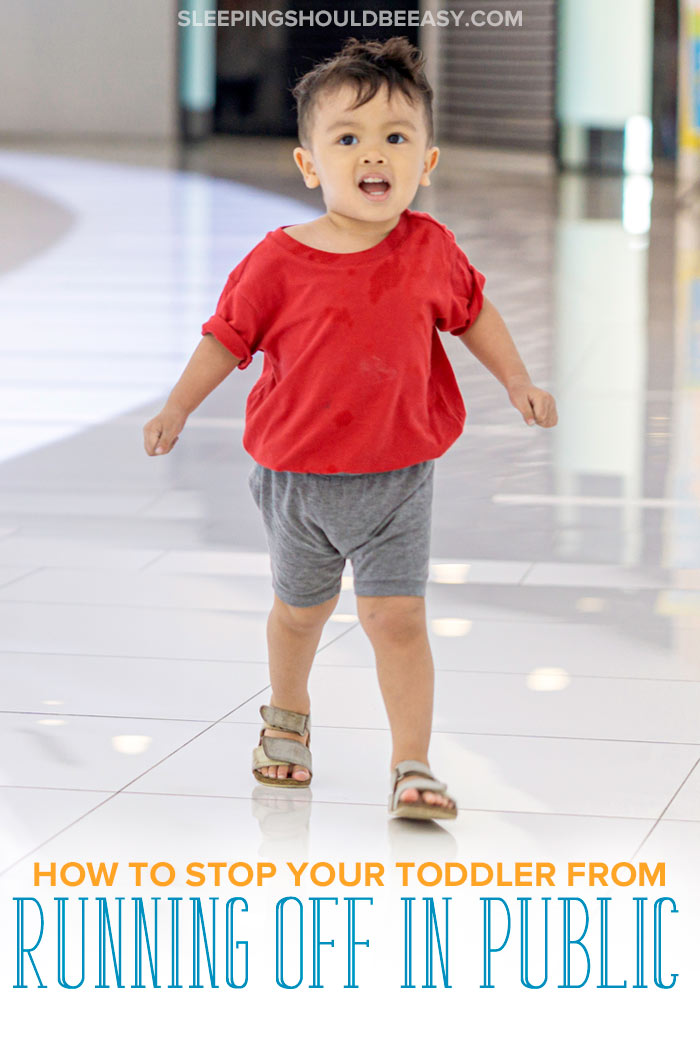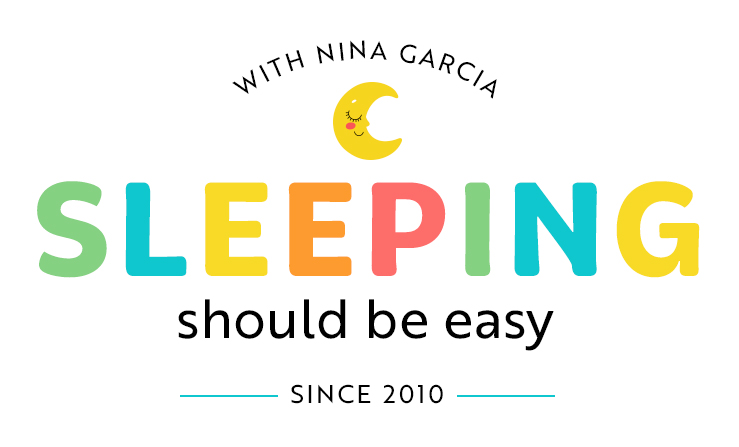How to Stop Your Toddler Running Away in Public
Frustrated with your toddler running away in public, especially in crowds? Learn how to keep your child safe when you’re on the go.
 We’ve all been that exasperated mom chasing after her child running away.
We’ve all been that exasperated mom chasing after her child running away.
From the grocery store to the mall, your toddler prefers to dash ahead instead of walking next to you on the sidewalk. He might run away like it’s a game of chase or hide out of sight as if playing peek-a-boo. And each time you grab hold of him again, he greets you with a mischievous grin, despite your serious face.
It doesn’t help if you’re carrying loads of bags, are pregnant, or caring for your other kids all while this is happening.
You’ve tried just about everything. You took away his favorite items, rewarded good behavior, and tried using restraints like a harness (which, like an escape artist, he somehow managed to break free from). You’ve even hollered, “I’m leaving now!” when he would run and hide, hoping he’d come back. And staying home isn’t always an option, either.
Table of Contents
How to stop your toddler running away in public
It’s not easy chasing after your toddler running away, or feeling that panicked response when you realize he’s has run too far off. But let’s start off with a few things not to do:
- No false threats. It’s tempting to say, “Goodbye!” but it’s not exactly effective when you both know you won’t leave. Giving false threats is an imbalance of the relationship you’re trying to nurture with him. They don’t align with integrity and “meaning your word” that you want to model for him.
- Don’t use consequences that have little to do with the situation. Another common mistake is to deny him a favorite item even though it has nothing to do with your toddler running away. As much as he might “listen” when threatened with the loss of a favorite toy, no lesson has been learned about running away. (Discover consequences for kids that actually work.)
- Don’t lose your temper. If you’re like me, you may think being “extra strict” can convey how important it is not to run away (not to mention how hard it is not to overreact when it happens). The thing is, losing your temper shows him that his behavior can trigger this kind of reaction.
- Avoid using a harness. As easy as it may seem to tether him to you, a backpack harness doesn’t teach impulse control or self-regulation or help him practice restraint.
Now that you know what doesn’t work, what can you do with your toddler running away? Losing your cool isn’t going to solve this issue in the long-term. Instead, take a look at how to get him to stop running off from you:
1. Show empathy
Whether your child darts off frustrated because he wants to go home already or is doing so with a grin on his face like it’s a game, he sees you as an “opponent.” After all, you’re likely yelling at him to stop running, or reprimanding him the minute he returns.
One way to reach out to him and truly see what he’s going through is to show empathy.
It’s easy to focus on all the ways he’s misbehaving, but beneath the tantrums and smirks are valid reasons driving him to behave this way.
Could he be tired from having shopped at lots of places already, or feeling ignored amid all the chores and errands left to do? Has he had a chance to get his energy out, or has he been cooped up too long? Could this be a deeper reaction to the new baby, or is he testing his limits as all toddlers do?
Begin your conversation with empathy: “I know you didn’t want to come to the grocery with me today. I’d be mad too if I had to do something I didn’t want to do.” Or “It’s hard when you want to play but I keep telling you to stop, isn’t it?” Or “You seem tired. Let’s make this quick so we can go home.”
Acknowledging your child’s feelings helps you better understand him, while crumbling the natural defiance he may feel toward you as well.
Free resource: Kids’ behaviors can push parents’ buttons, don’t you think? Join my newsletter and grab The Power of Empathy! Learn how to prevent power struggles and better connect with him, all by understanding his perspective. Get it below—at no cost to you:
2. Keep your toddler engaged during your outing
Imagine your last shopping trip at the grocery store. Your attention shifted between finding items you needed and making sure your toddler wasn’t getting into trouble.
Let’s see, where would I find the taco seasoning, you think to yourself, before barking, “Don’t touch that! You might break it.” (Speaking from experience.)
But what if, instead of seeing her as an added nuisance to the trip, you can talk and engage with her the whole time?
You might have her put the items in the cart or “steer” it in the right direction (which makes sure she’s holding onto it). She can help you count how many apples to add to the bag or decide which brand of maple syrup to go with.
The more engaged she feels, the less likely she is to run off on her own. She’ll feel respected when her opinion counts or when she’s helping mom with important tasks.
Check out these conversation starters for kids.
3. Reinforce safety rules clearly
As much as it feels like you tell your toddler over and over to stop or not to run, sometimes it’s the way you say it that matters more (with a big frown, no less).
For instance, it’s not entirely true that he should “not run,” since running itself isn’t bad—only in certain contexts. And he might even be confused when you tell him not to run through the mall on a crowded Saturday when last week you let him do so during an empty weekday outing.
Instead, reinforce the safety rules clearly, explaining why he can and can’t do certain things.
Say that hand-holding is non-negotiable when crossing a crowded street because people driving cars may not be able to see him. Or that hiding is only fun when both people decide to make a game of it, but not at a restaurant when mommy doesn’t know where he is.
And go over these safety rules before you take him out in in a busy public place.
Let him know he’s allowed to run around the nearby playground, but only in the open space where you can still see him. Explain that he needs to hold your hand today because there are too many people who might bump into him.
Give clear safety rules so he knows what is expected of him and why it’s important to abide by them.
4. Be consistent with what you say
The rules we implement are only as strong as the consistency surrounding them. The more consistent you are with what you say, the better your toddler understands (and takes you seriously).
For instance, if you say you’re going to leave the store should she keep running away, then you need to actually leave the next time she does. If hand-holding is non-negotiable when crossing the street, then you must hold her hand all the time, even when there are no cars nearby.
Inconsistency only gives room for her to experiment whether the rules apply to one context and not the other.
5. Get the jiggles out
Toddler are wired to run around and expel energy. In fact, our pediatrician recommended that young children should not be sedentary for more than an hour (besides sleeping). Your toddler may need to move, regardless of where he is.
So, prepare beforehand and help him get the jiggles out.
Play a physical game at home before heading to the grocery store where you don’t want him to run around. Run with him around the block instead of only telling him to stop running away. Or turn it into a game and play “Red Light, Green Light” or “Simon Says” to get him to stop when you tell him to.
And it doesn’t always feel good to be strapped into a stroller or car seat for long.
This might explain why he’s ready to bolt the minute you undo the stroller straps—he’s been cooped up too long (not to mention the thrill of arriving at your destination). If need be, arrive earlier and give yourself extra time so you can have him hop around near the door before going inside.
6. Prevent your toddler running away
As much as we try to course-correct when small children run off, the best way to avoid it altogether is to prevent it from happening in the first place.
- Don’t take your toddler with you. The easiest way is to decide whether you need to take her with you at all. Could you run this errand on a weekend when another adult could be with her at home? Will taking her to the park instead of the mall be a more appropriate way to spend your morning?
- Go at a good time. If you do need (or want) to take her, pick a good time to go. Monday morning at the grocery store is much easier than a Sunday afternoon trip. Make plans to play at the mall’s children’s area right when it opens, not at the peak lunch hour.
- Stick to familiar, child-friendly places. Keep new adventures to a minimum, while relying on your old standbys, so that you know the best ways to get in and out. You can focus on her more when you don’t have to adjust to a new environment.
- Keep your outing quick. Kids tend to get wired up when they’re restless or want to go home. Do what it takes to make the outing efficient, like planning which stores to go to first, or having a shopping list ready. If you feel she’s about to dart out of sight again, cut the trip short.
- Keep a snack nearby. If you feel like she’s hungry, offer a special snack she can eat next to you.
Conclusion
Nothing sends a parent more into a panic than not knowing where her child is, even for a split second. Add to that the frustration of knowing he tends to do this over and over despite your stern voice, whether because he’s mad or thinks it’s a game.
But now you have the guidelines to better respond to and even prevent your toddler running away.
Keep him engaged during your outing so he doesn’t feel left out (and even feels important). Show empathy so he knows you understand what could be driving his behavior. Reinforce safety rules, whether before or during your outing, and follow through with consistency on what you say each time.
And finally, prevent your toddler running away in the first place. Get the jiggles out, go at a good time and place, or keep him at home if possible.
Now you can take him on an outing—all without a harness to keep him in place.
Get more tips:
- What to Do when Your Kids Don’t Listen to You in Public
- Simple Strategies to Take Toddler Twins Out Alone
- What to Do when Your Child Acts Out in Public
- 5 Things to Remember when You’re Losing Your Temper with Your Toddler
- 8 Warning Signs You Need to Be a More Patient Mom
Don’t forget: Join my newsletter and grab your copy of The Power of Empathy—at no cost to you:


